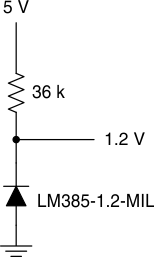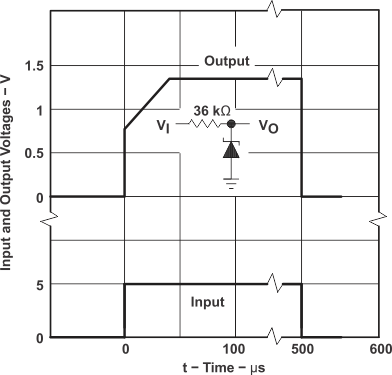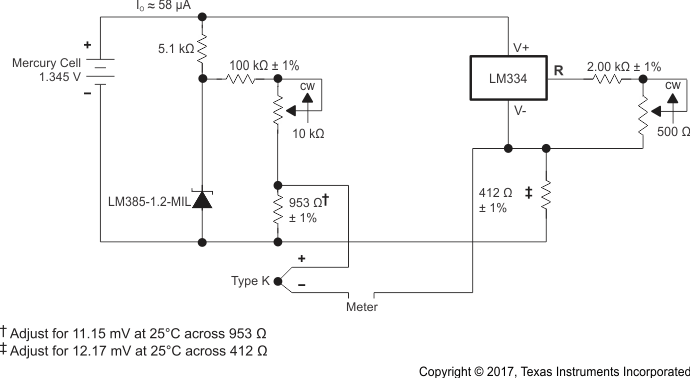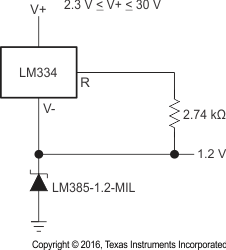SLVSE73 June 2017 LM385-1.2-MIL
PRODUCTION DATA.
- 1 Features
- 2 Applications
- 3 Description
- 4 Revision History
- 5 Pin Configuration and Functions
- 6 Specifications
- 7 Detailed Description
- 8 Application and Implementation
- 9 Power Supply Recommendations
- 10Layout
- 11Device and Documentation Support
- 12Mechanical, Packaging, and Orderable Information
Package Options
Mechanical Data (Package|Pins)
- YS|0
Thermal pad, mechanical data (Package|Pins)
Orderable Information
8 Application and Implementation
NOTE
Information in the following applications sections is not part of the TI component specification, and TI does not warrant its accuracy or completeness. TI’s customers are responsible for determining suitability of components for their purposes. Customers should validate and test their design implementation to confirm system functionality.
8.1 Application Information
The LM385-1.2-MIL device creates a voltage reference for to be used for a variety of applications including amplifiers, power supplies, and current-sensing circuits. The following application shows how to use these devices to establish a voltage reference.
8.2 Typical Application
 Figure 8. Generating Reference Voltage With a Resistive Current Source
Figure 8. Generating Reference Voltage With a Resistive Current Source
8.2.1 Design Requirements
The key design requirement when using this device as a voltage reference is to supply the LM385 with a minimum Cathode Current (IZ), as indicated in Electrical Characteristics.
8.2.2 Detailed Design Procedure
In order to generate a constant and stable reference voltage, a current greater than IZ(MIN) must be sourced into the cathode of this device. This can be accomplished using a current regulating device such as LM334 or a simple resistor. For a resistor, its value should be equal to or greater than (Vsupply - Vreference) ÷ IZ(MIN) .
8.2.3 Application Curve
 Figure 9. Transient Response
Figure 9. Transient Response
8.3 System Examples
8.3.1 Thermocouple Cold-Junction Compensator
 Figure 10. Thermocouple Cold-Junction Compensator
Figure 10. Thermocouple Cold-Junction Compensator
8.3.2 Generating Reference Voltage with a Constant Current Source
 Figure 11. Generating Reference Voltage With a Constant Current Source Device
Figure 11. Generating Reference Voltage With a Constant Current Source Device